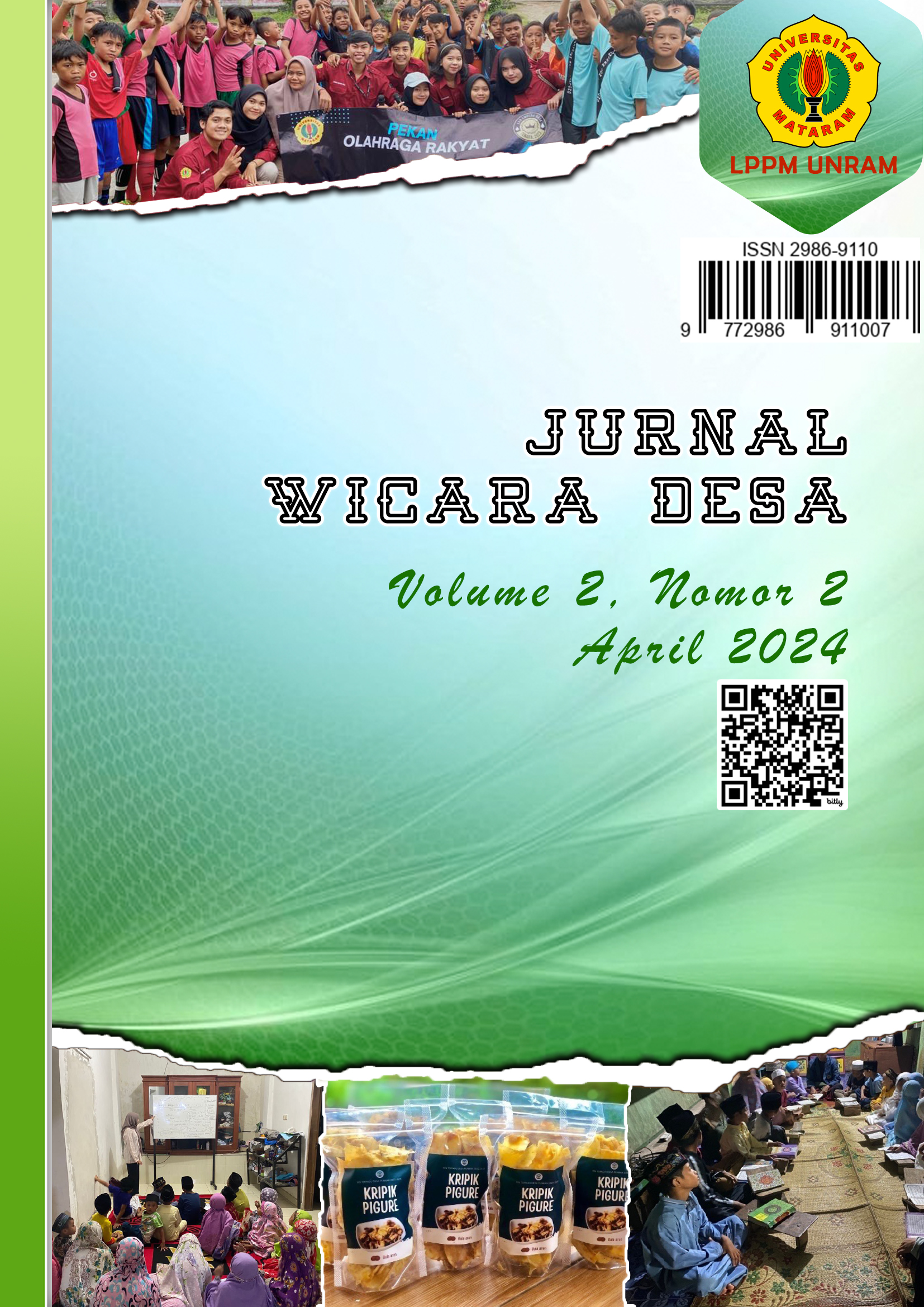PENGEMBANGAN STRATEGI PEMASARAN UMKM KERIPIK SINGKONG DI DESA MENEMENG KECAMATAN PRINGGARATA KABUPATEN LOMBOK TENGAH
DOI:
https://doi.org/10.29303/wicara.v2i2.4106Keywords:
SMES development, marketing strategy, cassava chipsAbstract
Kerja Kuliah Nyata (KKN) is a form of service from higher education institutions to the community carried out by the University of Mataram. One of the villages chosen as the location for implementing KKN is Menemeng Village, Pringgarata District, Central Lombok Regency, which has the main theme, namely Preneur Village. The problem faced is related to the packaging of partner cassava chips products, where the current packaging is not optimal in attracting consumers and does not meet applicable regulatory standards. The aim of this KKN activity is to answer and provide solutions to the problems that exist in Menemeng Village. In this case, developing a marketing strategy for MSMEs starts from selecting raw materials, processing, packaging and good marketing strategies. The method used in developing the MSME strategy is in the form of socialization and assistance to Micro, Small and Medium Enterprises (MSMEs) in facing the industrial revolution 4.0. The results of this activity have provided special knowledge and skills to MSME Partners in Menemeng Village regarding marketing agricultural products, by modifying packaging to increase the selling value of partner-produced cassava chips by improving the design and packaging method of products to make them attractive to consumers, by legalizing the business and Good packaging methods so that the product can compete and develop, especially for people who own cassava chips businesses, is an example of good product marketing. The results of this activity show that this KKN activity has been able to answer several problems that exist in Menemeng Village.






